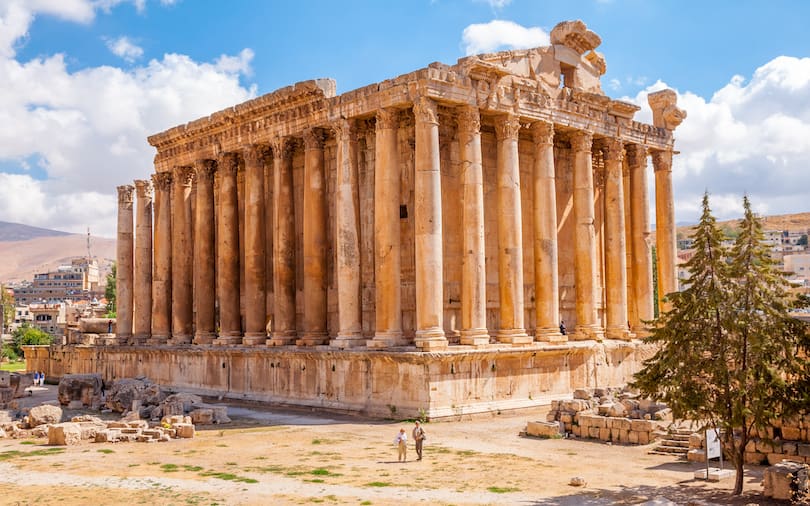The Virupaksha Temple, located in the historic town of Hampi, Karnataka, is an iconic temple that has survived the test of time. Known for its exquisite architecture, intricate carvings, and religious significance, the temple attracts visitors from all over the world. This article will take you on a journey through the history, architecture, and spiritual significance of the Virupaksha Temple in Hampi.
1. Introduction
Hampi, a UNESCO World Heritage site, is a small town in Karnataka, India, that boasts of an ancient and rich history. It was once the capital of the Vijayanagara Empire, a powerful South Indian Kingdom that ruled from 1336 to 1565. Today, the town is known for its breathtaking ruins, temples, and monuments that reflect the grandeur and opulence of the Vijayanagara era.
The Virupaksha Temple, situated at the foot of the Hemakuta Hill, is the most prominent and well-preserved temple in Hampi. It is dedicated to Lord Shiva, and its history dates back to the 7th century AD.
2. History of the Virupaksha Temple
2.1 Origin and Mythological Significance
The Virupaksha Temple has a rich and fascinating history that is steeped in mythology and legend. According to the legends, Lord Shiva appeared before the great sage Narada and asked him to build a temple in his honor. Narada then selected a site near the Tungabhadra River and installed a Shivalinga there. The temple that was built around this Shivalinga came to be known as the Virupaksha Temple.
2.2 The Vijayanagara Empire and the Temple’s Expansion
The Vijayanagara Empire, which rose to power in the 14th century, had a profound impact on the Virupaksha Temple. The temple was expanded and renovated under the patronage of the Vijayanagara kings, who added new structures and embellishments to the existing temple complex. The temple’s gopuram (tower), for instance, was built during the reign of King Krishnadevaraya in the 16th century.
3. Architecture of the Virupaksha Temple
The Virupaksha Temple is a stunning example of Dravidian architecture, with its intricate carvings, sculptures, and pillared halls. The temple complex is divided into several sections, each with its own unique features.
3.1 Gopuram
The gopuram of the Virupaksha Temple is the most recognizable feature of the temple complex. It is a towering structure that stands at a height of 50 meters and is adorned with intricate carvings of gods, goddesses, and mythical creatures. The gopuram is a gateway to the temple complex and leads to the main courtyard.
3.2 Sabhamandapa
The Sabhamandapa, or the main hall, is a large pillared hall that is used for congregational worship and ceremonies. The hall has 100 pillars, each adorned with intricate carvings of gods and goddesses.
3.3 Garbhagriha
The Garbhagriha, or the sanctum sanctorum, is the innermost chamber of the temple and is dedicated to Lord Shiva. The chamber houses the Shivalinga, the iconic representation of Lord Shiva.
3.4 Antaraala and Sukhanasi
The Antaraala is the vestibule that connects the main hall to the Garbhagriha. It is adorned with sculptures of gods and goddesses. The Sukhanasi is a small hall that houses a statue of Nandi, the sacred bull and vehicle of Lord Shiva.
4. Spiritual Significance of the Virupaksha Temple
The Virupaksha Temple is not just a stunning example of architecture but also holds immense spiritual significance for Hindus. It is considered one of the most sacred temples in South India and attracts thousands of devotees every year.
4.1 Festivals and Celebrations
The temple is known for its vibrant festivals and celebrations that take place throughout the year. Some of the most popular festivals include the Virupaksha Car Festival, which takes place in February, and the Hampi Utsav, a cultural festival that celebrates the history and heritage of the town.
4.2 Poojas and Rituals
The temple conducts daily poojas and rituals that are performed by the temple priests. The rituals include the Rudrabhishekam, a pooja dedicated to Lord Shiva, and the Mahamangalarati, a ritual that is performed in the evening.
4.3 Legends and Beliefs
The Virupaksha Temple is steeped in mythology and legends. According to one legend, Lord Shiva appeared in the form of a bull at the temple and blessed the king with his presence. Another legend states that the temple was built by Lord Virupaksha himself, who appeared in the form of a linga.
5. Visiting the Virupaksha Temple
Visiting the Virupaksha Temple is a must for anyone who is interested in the history and culture of South India. Here are some important details to keep in mind:
5.1 Location and Timings
The temple is located in Hampi, Karnataka, and is open from 6:00 am to 1:00 pm and from 5:00 pm to 9:00 pm.
5.2 Entry Fee and Rules
There is no entry fee to visit the temple, but visitors are expected to follow certain rules and regulations. Shoes are not allowed inside the temple, and photography is prohibited inside the Garbhagriha.
5.3 Accommodation and Facilities
For those who wish to stay close to the temple, there are several accommodation options available in Hampi. The nearby town of Hospet also offers a range of budget to luxury hotels for tourists.
The temple offers various facilities for visitors, including a cloakroom to deposit shoes and belongings. There are also restrooms available for visitors to freshen up.
The temple authorities provide various services to visitors, including arranging for a guide to give a tour of the temple and its history. There is also a provision for prasad, or sacred food, which is distributed to the devotees.
5.4 Best Time to Visit
The best time to visit the Virupaksha Temple is during the winter season, between October to February, when the weather is pleasant and the temple is less crowded. It is important to note that the temple is closed on certain days during the year for special ceremonies and festivals.
5.5 Safety Tips
Visitors are advised to take care of their belongings while visiting the temple, as pickpocketing incidents have been reported in the past. It is also important to stay hydrated and wear comfortable footwear, as the temple complex involves a lot of walking and climbing stairs.
Conclusion
The Virupaksha Temple in Hampi is an architectural masterpiece and a significant cultural heritage site in India. Its rich history, intricate carvings, and spiritual significance make it a must-visit destination for tourists and devotees alike. Visitors can explore the temple complex and its various sections, learn about its history and significance, and take in the awe-inspiring beauty of its architecture.
FAQs
- Is photography allowed inside the Virupaksha Temple? Photography is not allowed inside the Garbhagriha, but it is allowed in other parts of the temple complex.
- What is the significance of the Virupaksha Temple? The Virupaksha Temple is dedicated to Lord Shiva and is one of the oldest functioning temples in India. It has a rich history and cultural significance.
- Can I visit the temple at any time of the day? The temple is open from 6:00 am to 1:00 pm and from 5:00 pm to 9:00 pm. It is closed on certain days for special ceremonies and festivals.
- What is the best time to visit the Virupaksha Temple? The best time to visit the temple is during the winter season, between October to February.
- Are there any accommodation options near the temple? Yes, there are several accommodation options available in Hampi and nearby town of Hospet.



















You can certainly see your skills in the article you write.
The world hopes for even more passionate writers like you
who are not afraid to say how they believe.
All the time go after your heart.
Its such as you read my mind! You appear to grasp so much approximately this, such as you wrote the e book in it
or something. I think that you just could do with some % to power the message house a little
bit, but instead of that, this is wonderful blog. A fantastic read.
I’ll certainly be back.
Hello there, just became alert to your blog through Google, and found that
it’s truly informative. I’m gonna watch out for brussels.
I’ll appreciate if you continue this in future. A lot of people will be benefited from your writing.
Cheers!
Hi, I read your new stuff regularly. Your story-telling style is witty, keep it up!
Whoa! This blog looks exactly like my old one!
It’s on a completely different topic but it has pretty much the same layout and design. Outstanding choice of
colors!
Appreciate it. An abundance of info!
Excellent blog! Do you have any tips for aspiring writers? I’m hoping to start my own site soon but I’m a little lost on everything. Would you propose starting with a free platform like WordPress or go for a paid option? There are so many choices out there that I’m totally overwhelmed .. Any recommendations? Many thanks!
I like the valuable information you provide in your articles.
I will bookmark your blog and check again here regularly.
I’m quite sure I’ll learn a lot of new stuff right here!
Best of luck for the next!
Great weblog here! Also your site rather a lot up very fast!
What web host are you the use of? Can I am getting your
affiliate hyperlink on your host? I want my website loaded up as quickly as yours lol
What’s up, its fastidious article concerning media print, we all understand media is a fantastic source of information.
me encantei com este site. Pra saber mais detalhes acesse o site e descubra mais. Todas as informações contidas são conteúdos relevantes e únicos. Tudo que você precisa saber está ta lá.
This design is steller! You obviously know how to keep a reader amused.
Between your wit and your videos, I was almost moved to start my own blog (well, almost…HaHa!) Excellent job.
I really enjoyed what you had to say, and more than that, how
you presented it. Too cool!
Este site é realmente fascinate. Sempre que acesso eu encontro coisas diferentes Você também pode acessar o nosso site e descobrir detalhes! conteúdo único. Venha saber mais agora! :)
I have been absent for some time, but now I remember why I used to love this site. Thanks, I will try and check back more often. How frequently you update your web site?